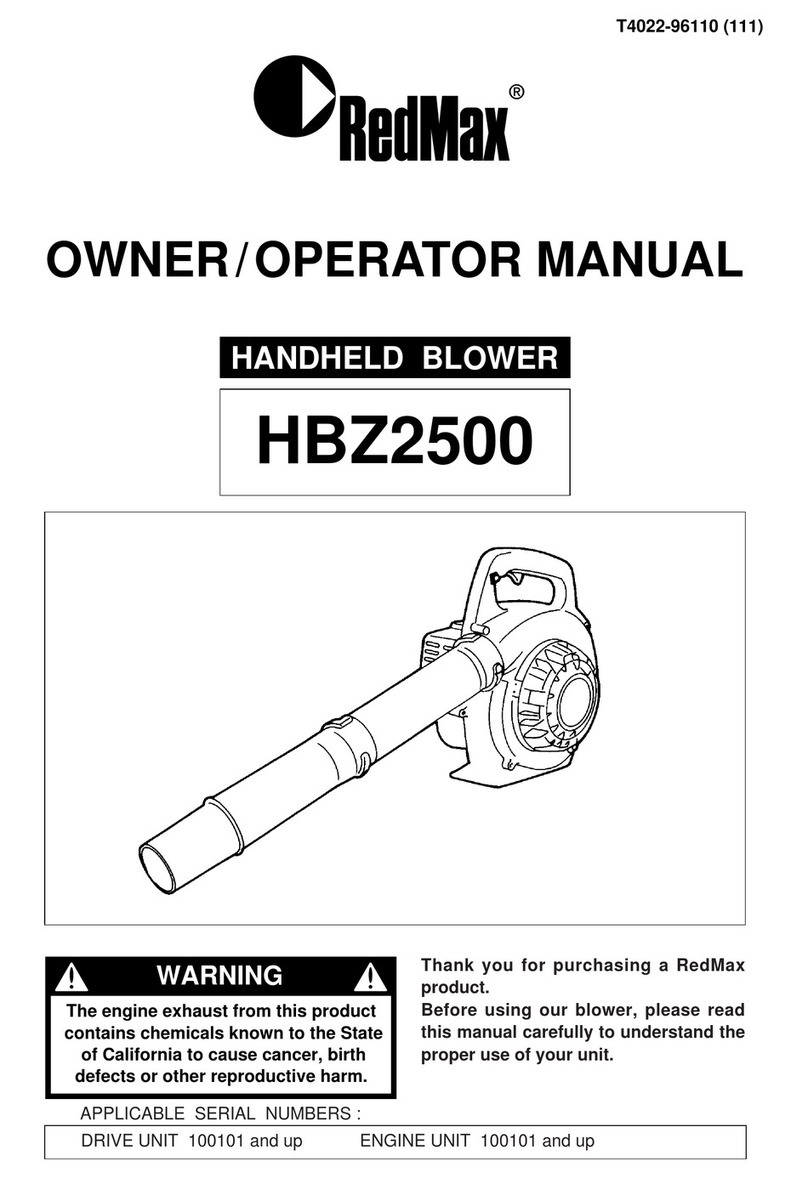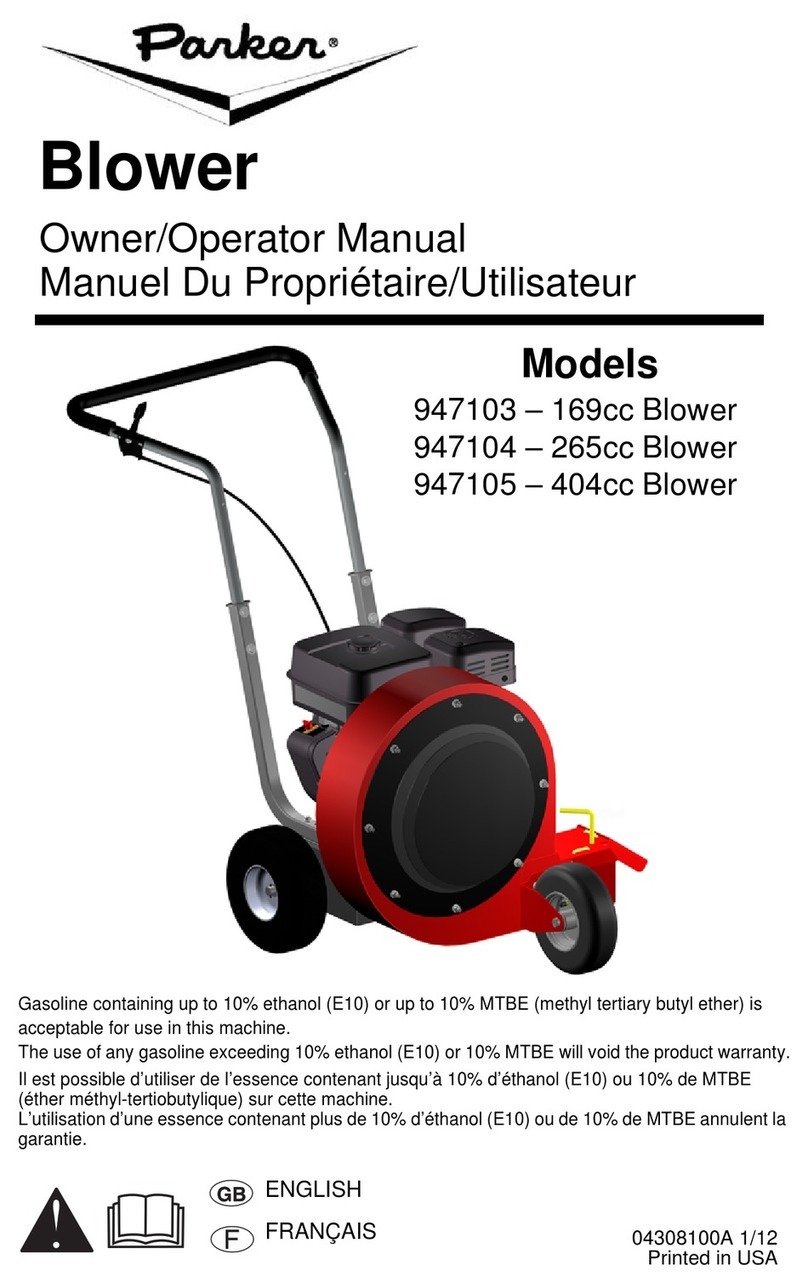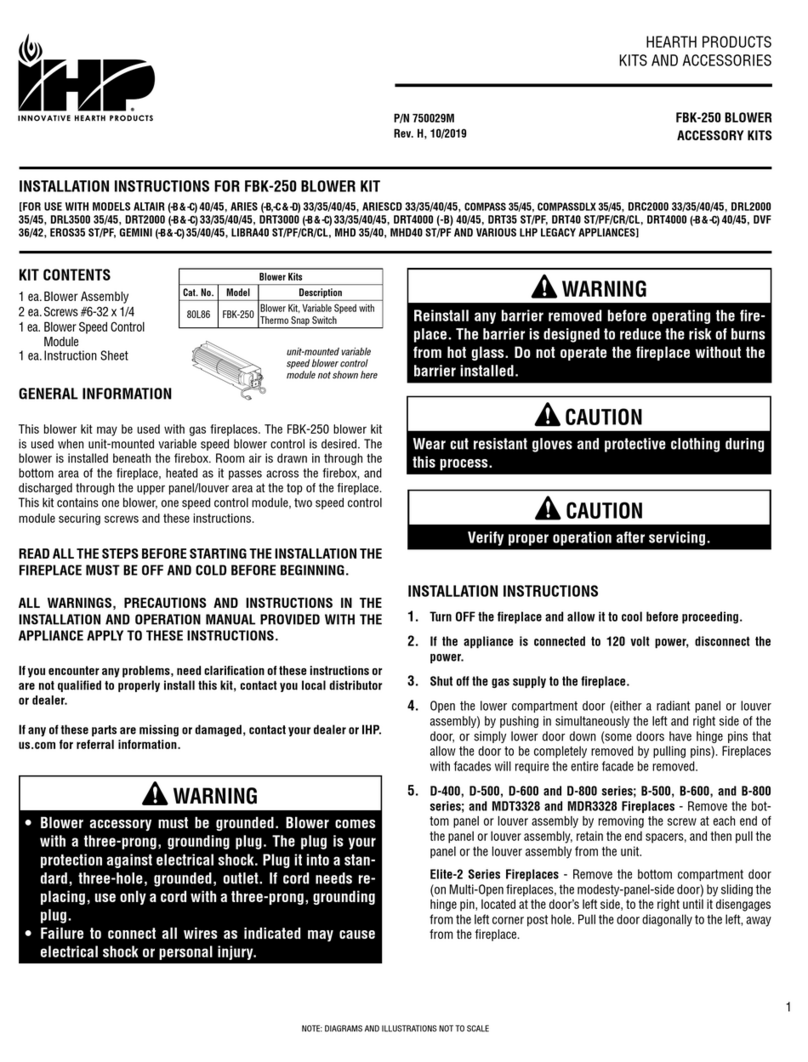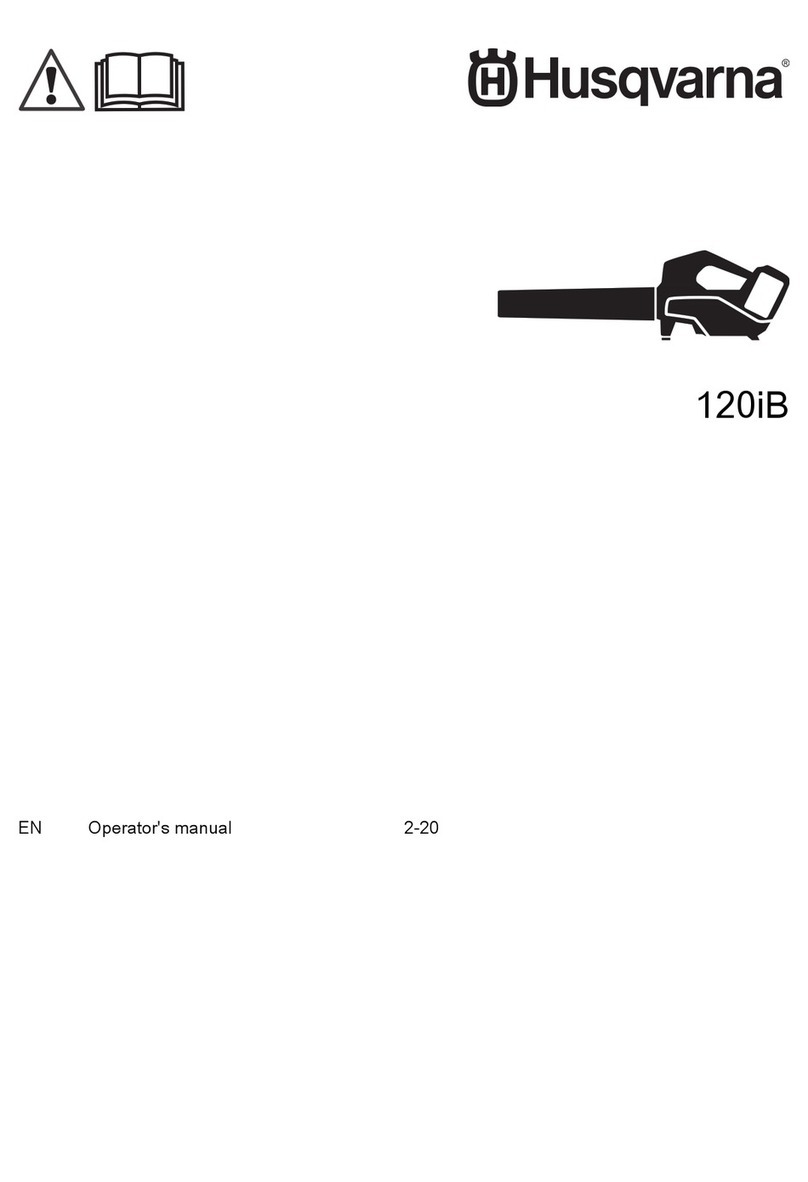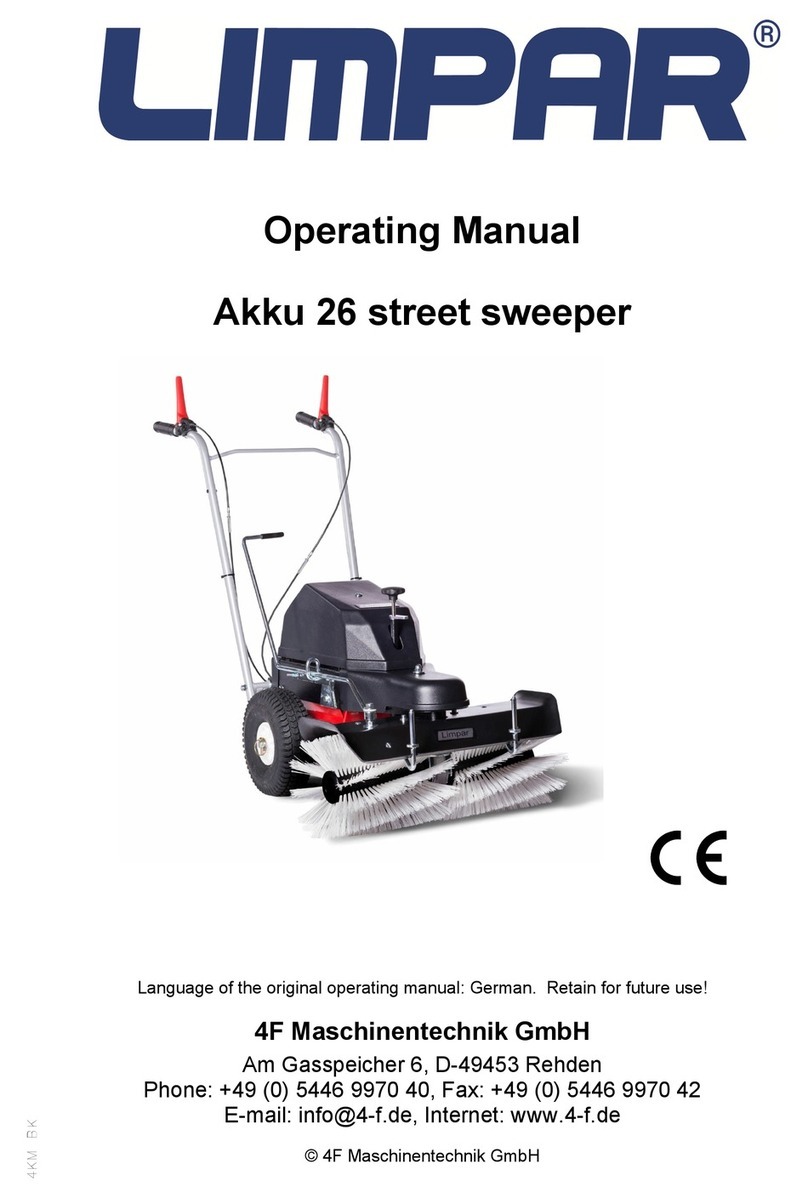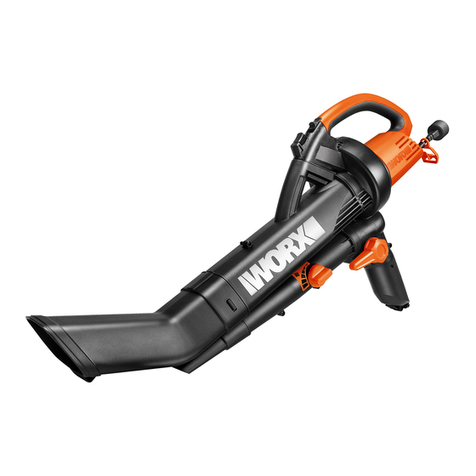Flory 33 Series User manual

Operators
Manual
__________________________
Flory
33 SERIES
Diesel Sweeper
Flory Industries, Inc.
4737 Toomes Road P.O. Box 908 Salida, California 95368
(209) 545-1167
96

Harvest / Safety Stewardship —————
Flory Industries, Inc. encourages the owners and operators of all equipment to be safe and courteous. Some
equipment will generate dust and /or flying debris. Please be aware of near by traffic and road conditions. Be
especially careful when maneuvering at row ends and turning onto public roads.
Operators should always take great care so as not to obscure drivers’ vision on public roads with dust
discharge. All operators should be informed about safe and courteous operation, especially in highly populated and
urban areas. Operators should also consider such things as wind speed, wind direction, etc.
Here are some suggestions that will help to reduce risk and allow you to have a safe and friendly harvest:
When sweeping, try to keep from blowing dust onto the roadway whenever possible.
When harvesting or conditioning parallel to a road, keep fan discharge pointed toward the orchard. This
might mean making several deadhead passes. Do the first three rows this way if possible.
When harvesting or conditioning in a traffic area, slow down forward speed and the engine RPM. These
two items will greatly reduce the dust generated. The product will have a little more trash but it will be
hardly noticeable.
When working along a roadway put up CAUTION signs warning drivers of dust in the area.
When moving equipment on the road, install yellow flashing lights that warn other drivers of a slow
moving vehicle.
Always display the SMV (Slow Moving Vehicle) sign when traveling on public roads. The law
requires this to be displayed when moving at speeds below 25 MPH. This sign is to be removed
when the machine is being transported on a trailer, if the sign is visible from behind.
Environmental Stewardship —————
Flory Industries, Inc. is aware that harvesting of tree nuts can be a very dusty operation. In an effort to be
as friendly as possible to our neighbors and environment, we recommend a few dust control measures:
SWEEPER: Always make sure that the sweeping head is adjusted properly so as to sweep the nuts, but not
put excessive dirt in the windrow that must be picked up later by the harvester.
It is not necessary to run the sweeper engine at full throttle if satisfactory blowing results can be
obtained at reduced engine speed. Lower engine RPM means less dust being generated.
Use a minimum number of sweeping and blowing passes. Sometimes an extra pass for a few
nuts costs more in labor and fuel than the value of the nuts, plus the additional dust that was made.
HARVESTER: While the harvester will pick up nuts at a very fast ground speed, it has been demonstrated that a
reduced ground speed will produce less dust and deposit a cleaner product in the cart, with only a
small overall increase in elapsed time, mainly because the harvester does not have to wait on an
empty cart or Shuttle.
CARTS: It is always advisable to keep the frequently traveled roadways sprinkled by a water truck to
minimize the dust when transporting nuts out of the field to the road side elevator.
97

TO THE OWNER
This manual contains information concerning the safety, operation, adjustment, and maintenance of your
Flory 33 Series Sweeper. You have purchased a dependable product, but only by proper care and operation can
you expect to receive the performance and long service built into this sweeper. Please have all operators read this
manual carefully and keep it available for ready reference.
We at Flory Industries welcome you to the growing number of quality conscious people who own and
operate Flory equipment. We take great effort to manufacture the finest quality machinery with the superior value
that the Flory name represents. You will notice that we have sought to anticipate your needs with respect to safety,
engineering, and environmental conditions.
Thank you for joining the large group of FLORY satisfied customers!
Identification —————
The model and serial number plate is located on the left front axle facing the rear of the machine.
Terms —————
The terms “right hand” and “left hand” are in reference to sitting in the operator’s seat, facing forward.
Improvements —————
Flory Industries, Inc. is continually striving to improve its products. We reserve the right to make
improvements or changes when it becomes practical and possible to do so, without incurring any obligation to
make changes or additions to the equipment previously sold.
Safety —————
Make sure all operators are familiar with the required safety practices of this machine.
Operator is to remain seated at all times while operating this machine.
This symbol is used throughout this book whenever personal safety is involved.
Take time to read and follow the instructions. Be careful!
98

PERSONAL SAFETY
Pictures in this manual may show protective shielding open or removed to better illustrate a
particular feature or adjustment. Be certain, however, to close or replace all shielding before
operating the machine.
Throughout this manual and on machine decals, you will find precautionary statements such as “Caution,”
“Warning,” and “Danger” followed by specific instructions. These precautions are intended for the personal
safety of you and those working with you. Please take the time to read them.
Caution: Hazards or unsafe practices which could result in minor personal injury or property damage.
Warning: Hazards or unsafe practices which could result in severe personal injury or death.
Danger: Immediate hazards which will result in severe personal injury or death.
Never allow children to play on or around this equipment at any time.
Failure to follow the “Caution,” “Warning,” and “Danger” instructions may result in serious bodily
injury or death!!
Always remember that behind safety shields where adjustments are made there are moving parts that
demand respect and care. Before operating the machine check to make sure that it has been serviced and that all
adjustments have been properly made.
Always replace and secure all safety shields before starting the machine. Never attempt to service or
adjust the machine while the engine is running!!
The Flory Sweeper is designed for simple, fast, one man operation, so never allow more than one person on
the sweeper at one time. Under no circumstances should anyone be allowed to ride on the machine! The operator
must never allow anyone within 100 feet of the blower fan outlet while the machine is in operation.
This sweeper is capable of sweeping faster than ground or tree conditions may safely allow.
Use good judgment, always start sweeping slowly and be aware of potential hazards (i.e., low
tree limbs)
IT IS VERY IMPORTANT FOR THE OPERATOR TO INSPECT AND CLEAN ALL FOREIGN
MATERIAL FROM THE MACHINE, ESPECIALLY THE ENGINE AND ENGINE COMPARTMENT.
ALL DEBRIS MUST BE REMOVED FROM THE TOP OF THE ENGINE AND SURROUNDING AREA
TO AVOID ENGINE FIRES! IN CERTAIN CONDITIONS THIS MAY NEED TO BE DONE SEVERAL
TIMES A DAY.
99

WARNING
Failure to heed these warnings may result in personal injury or death!!
1. Before operating this machine, read the operators manual carefully.
2. Operator is to remain seated at all times while operating this machine.
3. Use eye, ear, and head protection to protect operator from any flying debris and noise.
4. Always shut off engine, allowing all movement to stop before leaving the operators position to adjust,
lubricate, or unclog the machine.
5. All personnel should be clear of machinery before starting or operating it.
6. Keep hands and loose clothing away from any power driven parts.
7. Do not operate this machine without all guards being in good condition and firmly in place.
8. Stop the operation of this machine when people or vehicle drivers vision becomes obscured, caused by the
discharge of materials or dust.
9. Before working on or underneath the sweeper, engage the parking brake and place blocks or safety stands
underneath each side of the sweeper to prevent accidental lowering of the machine. Allow all movement to
stop before beginning work.
10. Do not modify or alter this machine from its original intended use.
11. Be sure parking brake is engaged when sweeper is not in motion.
12. Never remove or bypass the neutral start safety switch in any manner.
13. Always start the engine from the operators’ position.
14. Never allow children to play on or around this equipment at any time.
15. Always use wheel chocks for added safety when transporting or servicing this machine.
16. Always display the SMV (Slow Moving Vehicle) sign when traveling on public roads. The law requires this
to be displayed when moving at speeds below 25 MPH. This sign is to be removed when the machine is
being transported on a trailer, if the sign is visible from behind.
17. It is recommended to also use the flashing caution lights when traveling on public roads.
MACHINE SAFETY
Additional precautionary statements: “ATTENTION” and “IMPORTANT” are followed by specific
instructions. These statements are intended for machine safety.
ATTENTION: The word “Attention” is used to warn the operator of potential machine damage if a certain
procedure is not followed.
IMPORTANT: The word “Important” is used to inform the reader of something they need to know to
prevent minor machine damage if a certain procedure is not followed.
100

WARRANTY DETAIL
1. For a period of twelve months dating from delivery of machine to original purchaser, Flory Industries
warrants that each piece of new equipment manufactured by it shall be free from defects in material and
workmanship under normal use and service. Flory’s obligation under this warranty being limited to making
good at it’s factory any part or parts thereof which shall, within or during the first twelve months from date of
delivery to original purchaser, be returned to Flory and which at Flory’s examination shall disclose to it’s
satisfaction to have been defective. This warranty being expressly in lieu of all other warranties expressed or
implied and all other obligations or liabilities on Flory’s part. Flory neither assumes nor authorizes any other
person to assume for it any other liability in connection with the sale of this equipment. This warranty shall
not apply to any equipment which may have been repaired or altered outside of its factory. Flory makes no
guarantee whatsoever in respect to tires, rims, motors, controls, clutches or other trade accessories inasmuch
as they are guaranteed separately by their respective manufacturers.
2. Flory Industries will allow credit for removing and replacing defective parts covered by warranty. The time
allowed will be based on our knowledge of the time required. No allowance will be made for travel time.
3. All claims must be completed and filed with Flory Industries within 30 days after date of failure.
4. Parts claimed to be defective must be returned, transportation prepaid to Flory Industries, and accompanied
by the completed Warranty Claim and proper identification.
101

SAFETY DECALS
The decals shown below and on the following pages have been placed on your machine for the safety of
you, and those working with you. Please take this manual and walk around your machine, and note the content and
location of these warning signs. Review these decals and the operating instructions in this manual with your
machine operator(s). Keep the decals legible. If they are not, obtain replacements from your Flory dealer or from
the factory.
Qty. - 4
Location – One on each side of engine cover, one on the front of reel cover,
and one on the left side of the delivery chute
Flory P/N: FD170
Qty. - 1
Location – Inside of Door on Operators Manual holder
Flory P/N: FD71
Qty. - 1
Location – Control Console side panel
Flory P/N: FD173
102

OPERATION
Qty. - 1
Location – Inside cab on seat mounting bracket.
Flory P/N: FD240
Qty. – 1
Location – Fuel Tank – right side
Flory P/N: FD172
Qty. - 1
Location – Blower housing – left side
Flory P/N: FD239
103

OPERATION
Pre-start Inspection —————
Although adjustments are not necessary daily, IT IS VERY IMPORTANT for the operator to inspect and
clean all foreign material from the machine and engine compartment. All debris must be removed from the top of
the engine and surrounding area to avoid engine fires. This must be done as often as needed.
Always replace and secure all safety shields before starting the machine. Never attempt to
service or adjust the machine while machine is running.
Engine Check - Daily —————
ATTENTION: Refer to the Operator’s Manual provided by JOHN DEERE for specific instructions on
engine break-in, lubrication, and maintenance. See Specifications and Fluids page at the
back of this manual for recommended oils and coolant.
1. Make sure radiator core is free of trash.
2. Oil levels: engine and hydraulic reservoir.
3. Fuel supply.
4. Coolant level.
5. Air cleaner. Check for cracks in housing and air inlet tube assemblies. Clean the element when restriction
indicator indicates this is necessary.
6. Fan belt: tension and condition. (Fan belt drive pulleys will get worn due to abrasion, (the V groove
becomes a U shape) and may need to be replaced every 500 hrs or so to avoid overheating of engine.)
7. (Weekly) Inspect the fuel - water separator and drain if needed.
Starting the Engine —————
Note: Speed control lever must be in neutral position, before engine will start.
1. Be sure parking brake is engaged, (switch up)
2. Be sure speed control lever is in neutral position.
3. Move throttle lever forward to approximately 1/4 open.
4. Depress and hold engine shutdown switch and then turn ignition switch fully clockwise to engage starter.
5. After engine starts, release the ignition switch allowing it to remain in the “on” position. Continue holding
engine shutdown button until engine oil pressure is established.
ATTENTION: To assure proper lubrication of a cold engine, operate at or below 1,200 R.P.M. with no
load for 1-2 minutes. Extend this period 2-4 minutes when operating at temperatures below
freezing.
104

OPERATION
Stopping the Engine —————
ATTENTION: Before stopping an engine that has been operating at working load, idle the engine for at
least two minutes at 1,000-1,200 R.P.M. to cool hot engine parts.
1. Move throttle lever to idle position.
2. Turn ignition switch counter-clockwise to “off” position.
Propulsion —————
Never jerk the speed control lever quickly from one direction to the other, as this creates
severe loads and may shorten the life of hydraulic components.
Complete speed control of the machine is accomplished through the use of the Speed Control Lever. The
further forward from neutral, the faster the forward speed, and the further back from neutral the faster the reverse
speed. (It is not necessary to run the engine at full RPM if satisfactory blowing results can be obtained at a lower
engine speed. Lower engine RPM will result in less dust being generated by the blowing process.)
When ground speed is reduced due to increased loads, the Speed Control Lever should be moved toward
the neutral position. For example, when encountering a hill it may be necessary to move the speed control lever
toward neutral rather than full speed. This is the same as down shifting with a typical mechanical transmission.
This sweeper is capable of road speeds of approx 14 MPH. To obtain this speed, select “ROAD” on the
electrical switch for speed range and then move the Speed Control Lever forward. The electric switch to select
the speed range: “ROAD” or “FIELD” can be used at any time. However, the change in vehicle speed will
be more violent and abrupt at high engine RPM and high speed. It is good to throttle the engine down a bit to
make the speed shift change, and then throttle back up.
IMPORTANT: Sweeping in “ROAD” range may cause over-heating of the hydraulic oil and
can lead to serious damage of hydraulic components! USE “ROAD” RANGE ONLY FOR
TRANSPORT ON HARD DIRT OR PAVED ROADS.
Braking —————
To slow the sweeper, move the speed control lever towards neutral (or beyond) for desired deceleration by
means of dynamic braking.
The parking brake is located on the control console. Move the switch to the “on” position to engage the
brakes.
NOTE: The parking brake is a “wet brake” and requires the addition of approx 5.5 fl oz of oil. See
Specifications and Fluids page at the back of this manual for proper oil recommendation.
The parking brake is not intended to be used as a method of slowing the sweeper during
normal operation.
The brake is intended for parking purposes only. Make sure the brake is released before
attempting to drive the machine.
4 Wheel Drive Option —————
105

OPERATION
When the 4 wheel drive option is installed on a machine, there are no switches required to activate it, the
machine is always in 4 wheel drive mode as long as it is in Low Range (Field). The 4 wheel drive mode will not
work in High Range (Road) as this speed is intended for High speed transport only. If traction is lost at any
time with either the front or rear tires, operator should depress the switch located on the floor near the operators
right foot. This makes a temporary “posi-traction” link between the front and the rear. When the difficult spot is
cleared, release the switch and continue on. It is not intended for the “posi-traction” switch to be depressed for
long periods of time, or when the machine is making a sharp turn.
Electronic Digital Display —————
1. The Electronic Digital Display has 2 different screens that show critical values and the status of different
systems on the 33 Series Sweeper.
a. The first screen will display the following: (This is the default screen upon start-up)
i. Engine Oil Pressure (psi)
ii. Coolant Temperature (deg F)
iii. Battery Voltage (V)
iv. Engine Hours (hrs)
b. The second screen will display the following: (This screen is accessed by pushing [2 times]
either one of the 2 center Soft Keys.)
i. Vehicle Speed (mph)
ii. Engine RPM (rpm)
2. The Digital Display also has a warning screen to alert the operator of a potentially harmful situation.
This warning screen display is:
a. Do Not Sweep in High Gear
i. This screen will flash once every 5 seconds when in high gear.
3. Other functions of the Digital Display unit are as follows:
a. The Left Soft Key (push 2 times) allows you to adjust the brightness and contrast by following the
+ or – symbols above the Soft Keys.
i. When finished with the adjustment this screen will revert back to the Home Screen.
b. The Right Soft Key (push 2 times) brings up the Main Menu.
i. This screen is primarily for programming and requires the use of a PIN number to make
any changes in the program. Flory Industries retains possession of all programming
information.
ii. Press the Left Soft Key to EXIT this screen and return to the Home Screen.
Blower —————
The blower air stream (ON-OFF) is controlled with a “damper” that is hydraulically actuated by the
electrical “rocker switch” switch located on the top of the Speed Control Lever. The volume of air may be varied
from full “ON” to full “OFF” by the use of this control. Press on the right side of the switch to turn the blower ON,
and press on the left side of the switch to turn the blower OFF.
The blower spouts may be adjusted vertically to accommodate different field conditions, such as blowing
up hill, down hill, or when trees are planted on borders. The rear spout is adjusted with a hydraulic cylinder, and
the front spout is linked to the rear spout with a chain, so that they will operate together. The electrical switch for
the hydraulic cylinder valve is located on the control console. Press the switch up to raise the spouts, and press the
switch down to lower the spouts.
The deflector vanes in either spout may be adjusted both vertically and horizontally for maximum air
control.
It is not necessary to run the engine at full RPM if satisfactory blowing results can be obtained at a lower
engine speed. Lower engine RPM will result in less dust being generated by the blowing process.
106

OPERATION
Controls/Gauges —————
1. Reel Control (on-off and speed) 12. Caution Light Switch
2. A/C – Temperature Control 13. Caution Light Indicato
r
3. A/C – Heater Switch 14. Murphy switch
4. Hi/Low Shift (Becomes 2WD/4WD with 15. Blower Damper Control
Optional 4WD kit) 16. Speed Control Lever (F – N – R)
5. Cooling Fan Manual Purge 17. Engine Throttle
6. Parking Brake 18a. A/C Blower Control (on A/C unit – Rt front)
7. Ignition Switch 18b. A/C Temp Control (on A/C unit – Rt front)
8. 12 Volt Power Poin
t
19. Reel Lift (front push-
b
uttons, up – down)
9. Engine and Systems Display - (ESD) 20. Heater Control (optional, when installed)
10. Blower Spout Control (up – down) 21. Traction control switch with optional 4WD
11. Lights (Not shown, on floor at right heel)
107

OPTIONAL EQUIPMENT
Flory Industries offers some optional equipment configurations for 33 Series Sweeper for use in
specialized environments. Listed below are some of the options; please contact the Factory or your Flory
Authorized Representative for more information.
Berm Brush Option
The brushes on the outer ends of the sweeping heads can be adjusted manually for the width of coverage.
Manual adjustments also are required for setting the depth and rotating the brush “head” to meet different field
conditions such as flat ground or borders. The speed of the individual brushes can be changed by means of a flow
control valve located on the back side of each sweeping head. For best performance, the flow control valves for
these brushes should be set for approximately 100 RPM.
This brush takes a lot of abuse and may need to be replaced more than once during a normal sweeping
season.
Side Kick Option
When folding and unfolding the side kick, proper sequence must be adhered to. To fold the side kick up
into the transport position, first retract the fold (top) cylinder about 75% of the way. Then extend the lift (bottom)
cylinder all the way out. When the lift cylinder is fully extended, retract the fold cylinder the rest of the way until it
is fully retracted. When unfolding the side kick take extra caution, the improper sequence of events could
lead to damage of the side kick. Start by extending the fold cylinder about 25% of the way. Next, retract the lift
cylinder until there is about 1” of stroke left showing. Then finish extending the fold cylinder the rest of the way
and the side kick depth wheels are touching the ground. Finally turn the reel switch to the ‘ON’ position, when the
reel position is ‘ON’ the lift cylinder will go into ‘FLOAT’ mode and no longer supporting the
structure.
If the reel is turned ‘ON’ while the side kick is elevated, the side kick will come
crashing down to the ground. Causing damage to the machine and possible injury.
108

ADJUSTMENTS
Sweeping Reel —————
The control to operate the reel is located to the left, and forward of the operator, on the dashboard. To
engage the reel, move the handle in a clockwise direction from the “off” position. This valve controls the “on and
off” condition of the reel assembly and also the speed of the reel by moving the swing arm to the full on position. It
is not necessary to run the reel at full speed all the time. Choose the speed that works best for the conditions that
you are in.
The reel assembly is raised and lowered by means of an electric solenoid valve in the hydraulic system.
The switches for this valve are located on the front side of the hydrostat control lever. Press the top button to raise
the header, and press the bottom button to lower the header.
Reel Speed —————
Reel speed is variable from 0-145 R.P.M. To increase speed, move the handle clockwise away from the
“off” position. To decrease speed, move the handle counter-clockwise toward the “off” position.
Reel Depth —————
The sweeping depth for all widths of reels is controlled by a depth wheel on the right side, and a depth
control crank on the left side. To adjust the sweeping depth, raise the reel enough to “un-weight” the depth crank
and wheel, then make the adjustments as needed to achieve desired sweeping depth. Required sweeping depth is
determined by the ground conditions at hand.
The depth wheel is easily adjusted by means of turning the threaded stem. First, remove the click pin and
the “L shaped” locking handle from the top of the threaded stem. Then use the special “T handle” (hanging inside
the cab) with a 15/16” socket on the lower end to adjust the height of the wheel assembly. When finished with the
adjusting process, re-install the L shaped locking handle with the click pin in the top of the threaded stem, to keep
the adjustment from changing over a period of time due to vibration, etc.
Recommended settings for the sweeping heads: (NOTE: These settings should be established on hard
dirt, or on a concrete floor.) Make sure sweeping head is parallel to the ground surface, right side to left side.
HARD SOIL: Set the sweeping head height for the wire tines to be ¼ inch above the ground.
SOFT SAND: Set the sweeping head height for the wire tines to be ¾ inch above the ground.
Additional options for sand: 1) Reel speed can be reduced to approx 75% of normal, 2) Tire pressure can
be reduced somewhat to provide more flotation.
NOTE: If sweeper tends to “bounce” at preferred sweeping speed, please refer to above settings. If
necessary, raise the sweeping head several turns on the adjustments until you skip over a few nuts – then gradually
lower the head a turn at a time, until you achieve proper results, and the bouncing should by now be minimized.
Sometimes leaning the head forward a small amount by lengthening the top link will also help reduce bouncing.
Windrow Delivery —————
The reel assembly is equipped with a hinged cover on the left side which allows the operator to vary the
size and shape of the windrow. It may be raised or lowered by means of an adjustment bolt to achieve the desired
effect. It may also be folded up or removed entirely in heavy crop conditions, or when transporting the sweeper.
109

MAINTENANCE
Engine —————
Please refer to the enclosed engine manual provided by JOHN DEERE when ordering parts or if you have
questions about the engine.
Always use clean fuel and keep the tank full to minimize water condensation. The engine fuel filter and
water separator canisters are located on the left side of the engine and must be serviced periodically, (see engine
manual). Water should be drained from the water separator, (periodically) and the fuel filter should be replaced
when needed. Initial fuel filter replacement should be at 50-100 hrs and then John Deere recommends fuel filter
replacement every 600 hours of operation, or at the beginning of each season. (Whenever an in-line fuel filter is
used, it is located between the tank and the engine, and should be replaced after the first 50 hrs of operation of a
new machine. After that, the service interval should be at the beginning of each season.) See Specifications and
Fluids page at the back of this manual for diesel fuel recommendations.
Always stop the engine before re-fueling and be careful not to overfill the tank. Do not smoke
when re-fueling, or servicing the fuel system due to potential fire hazard.
It is recommended to change the engine oil and filter at 100-150 hour intervals. See Specifications and
Fluids page at the back of this manual for engine oil recommendations.
Radiator —————
When adding or changing coolant / antifreeze in the radiator, refer to the engine manual provided by
JOHN DEERE to determine proper mixing ratios and quantities to protect against freezing and overheating. See
Specifications and Fluids page at the back of this manual for engine coolant recommendation.
Explosive release of fluids from the cooling system may cause serious burns. Shut off the
engine, and remove the filler cap only when cool enough to remove with bare hands. Slowly
loosen cap to relieve pressure before removing completely.
Check the condition of the fan drive pulleys and belt frequently to see if they are getting
worn and in need of replacement.
To clean the radiator, open the engine compartment hood. Using compressed air, blow thoroughly between
the fins and tubes to remove debris. Do not allow the air nozzle to contact the cooling fins on radiator or condenser.
This will damage the fins and restrict air flow. Blow off the grille. It is the operators’ responsibility to keep the
radiator clean! Failure to do so may cause overheating and void the engine warranty.
This sweeper is equipped with a coolant overflow tank to capture coolant in the event of overheating.
Always maintain the coolant level at approximately 1/3 capacity of recovery tank.
The engine is equipped with a reversible fan to help keep the radiator clean during operation. A
programmed electronic timer reverses the blades approximately every 8-10 minutes to blow trash from the radiator
core. If the operator observes the engine temperature rising beyond normal range, this may indicate excessive trash
in the radiator. An “override button” located on the control console allows the fan to be reversed as needed, in
between “program cycles” providing additional radiator cleaning.
For information about service, adjustments, etc. pertaining to the fan system, refer to the literature provided
by Cleanfix in this manual.
110

MAINTENANCE
Battery and Electrical System —————
To achieve maximum life and service from the battery, maintain the proper water level in cells and keep
terminals clean and free of corrosion. During the off season, remove battery from the sweeper and keep charged.
Fumes given off by the battery are explosive! Keep sparks and flames away from battery.
TO AVOID WELDER DAMAGE TO SENSITIVE ELECTRONIC COMPONENTS YOU
MUST ALWAYS:
1. Disconnect both Positive and Negative battery cables from the battery.
2. Disconnect the ground wire that attaches the ECM to the frame.
3. Attach welding ground clamp in close proximity to area being welded.
The electronic components on this engine and machine are very sensitive to stray electrical currents and can
incur serious damage if proper pre-cautions are not observed.
Air Cleaner —————
The air cleaner must be serviced periodically, depending on the dust conditions in which the engine is
being operated. The exhaust ejector removes a considerable amount of dirt from the air cleaner, and reduces the
frequency of service intervals. Always refer to the restriction indicator on the inlet side of the air cleaner as a
guide to determine service intervals. This “Informer” restriction indicator records the amount of restriction in the
element due to dirt inclusion. It is not recommended to service or replace the air cleaner element until the
restriction indicator shows an inlet restriction of 20 inches H2O.
When cleaning this (conventional style) element, use caution so as not to damage the paper media or
sealing area, which could result in a “dusted” engine. Flory Industries recommends replacing the element
rather than servicing it. According to Donaldson, the filter dirt holding capacity is reduced 20-40% with each
cleaning, and Donaldson, like other heavy duty filter manufacturers, does not warrant the air filter once it has been
cleaned!
Flory Industries recommends Donaldson only for replacement elements! Warranty cannot be considered for
engine damage due to dust ingestion if a non-recommended element has been used in the air cleaner assembly!
Hydraulic System —————
It is recommended to change the hydraulic oil once every 500 hours or once per season. Change the suction
filter, located on the inside front of the oil tank, and the return filter located on the rear of the tank every 500 hours
also. See the Specifications and Fluids page at the back of this manual for hydraulic oil recommendation to
provide the best performance and life. Maintain the oil level within the sight gauge at all times.
Escaping hydraulic oil under pressure may penetrate the skin causing personal injury.
Before disconnecting any hydraulic lines, be sure to relieve the pressure. Periodically check
all lines and hoses to be sure they are not damaged.
111

MAINTENANCE
Wheel Torque Hubs —————
The Torque Hub fluid level should be maintained at 1/2 full at all times. To add fluid to the Torque Hubs,
rotate the hub so that the plug is directly to the right or left of center. Remove the plug, (see illustration below) and
add fluid until it runs out of the hole positioned at 3:00 or 9:00. It is recommended to change fluid after 50 hours of
initial operation, and every 500 hours thereafter. See the Specifications and Fluids page at the back of this
manual for gearlube recommendation to provide best performance and life when filling or replacing the
lubricant. Capacity is approximately 27 oz. of oil.
The Torque Hubs are equipped with hydraulic brake units attached on the backside. The brakes will actuate
should the engine stop or loss of hydraulic pressure occur. It may become necessary to bleed air from the brakes or
brake lines after doing maintenance or service work. The bleeder port is located on the top, inside area of the brake
units.
To disengage the Torque Hubs for towing or freewheeling, remove the two cap screws and the end caps.
Then turn end caps over, and depress the button in the center of the hub by bolting the end caps back in place, in the
reversed position. (See illustration below)
Note: The sweeper propulsion and braking systems will not operate until the end caps have been
returned to their original (operating) position, with the center button out.
To avoid damaging planetary gears, do not tow for long distances or faster than 15 M.P.H.
112

MAINTENANCE
Fan Wheel/Fan Shaft —————
Should it become necessary to remove the blower fan shaft from the engine flywheel, it is very important
that the shaft be removed and re-installed using the following procedure, to ensure that the shaft runs straight and
does not vibrate.
Removal:
1. After removing fan wheel from shaft assembly, install (2) 1/2” SAE bolts in the holes provided in the drive
plate, to assist in removal.
2. Remove the (8) mounting bolts from the drive plate. CAUTION! Some machines may have shims on the
mounting bolts, between the drive plate and flywheel. It is important that the shim(s) be kept on the
same bolts, and that they are re-installed in the same holes from which they were removed. It is
recommended to number each bolt, and corresponding mounting hole, to ensure proper re-assembly.
3. Turn 1/2” bolts inward on the drive plate to loosen shaft assembly from flywheel.
Installation:
1. Clean the mating surfaces of the flywheel and the shaft assembly thoroughly.
2. Apply “Loctite 242” thread locker to the (8)-3/8”x 1-1/4” mounting bolts.
3. Using (4) 3/8” x 1” countersunk flathead bolts (@ 90 degrees apart) and (4) 3/8” x 1-1/4” bolts, loosely re-
install the shaft assembly with witness marks lined up, and shims (if used) installed on proper bolts. Tighten
countersunk bolts evenly, to center the shaft on bolt holes.
4. Tighten the (4) 3/8” x 1-1/4” bolts to 30 ft. Lbs.
5. Remove the (4) flathead countersunk bolts, and replace with the remaining 3/8”x 1-1/4” bolts, and torque to
30 ft. lbs.
6. Using a dial indicator, check run-out of shaft between keyway and shoulder area on shaft. Run-out should
not exceed 0.010”.
IMPORTANT: In order to maintain a balanced fan wheel; never replace individual blades on the
wheel. Always replace as a complete set, and re-balance complete fan assembly, prior
to re-installing on fan shaft.
Witness Marks
(Locate before removal to
insure proper reassembly)
Removal Bolt Holes
Flywheel
Fan Shaft Drive Plate
113

MAINTENANCE
Tires/Wheels —————
See Specifications and Fluids page at the back of this manual for proper tire inflation pressures.
Front wheel bearings should be re-packed once per season.
Wheel lug nuts should be inspected after 10 hours of initial operation, then once per season, or every 200
hours. Tighten as needed.
Bearing Lubrication —————
For maximum bearing and component life, it is recommended to follow the intervals listed below.
1. Grease steering yoke shafts every 15 hours with one pump.
2. Grease all other fittings weekly.
Sweeping Reel —————
The sweeping reel is equipped with wire teeth installed on the front of the tine bars, and rubber fingers on
the backside of the tine bars. The wire teeth should be replaced when worn to a length of 2-1/2”. (New length is
3-1/4”) Replace the rubber fingers when they begin to show substantial wear.
The right end plate spindle utilizes a wheel hub with tapered roller bearings. These bearings should be
removed and re-packed once per season.
Serpentine Belt Idler —————
Due to the fact that this piece of equipment operates in an extremely dusty environment, it is recommended
that the serpentine belt idler be changed every 250 hours. See the parts book engine page for idler identification.
114

115
This manual suits for next models
3
Table of contents
Popular Blower manuals by other brands

TURFCO
TURFCO Torrent Operators manual & parts lists
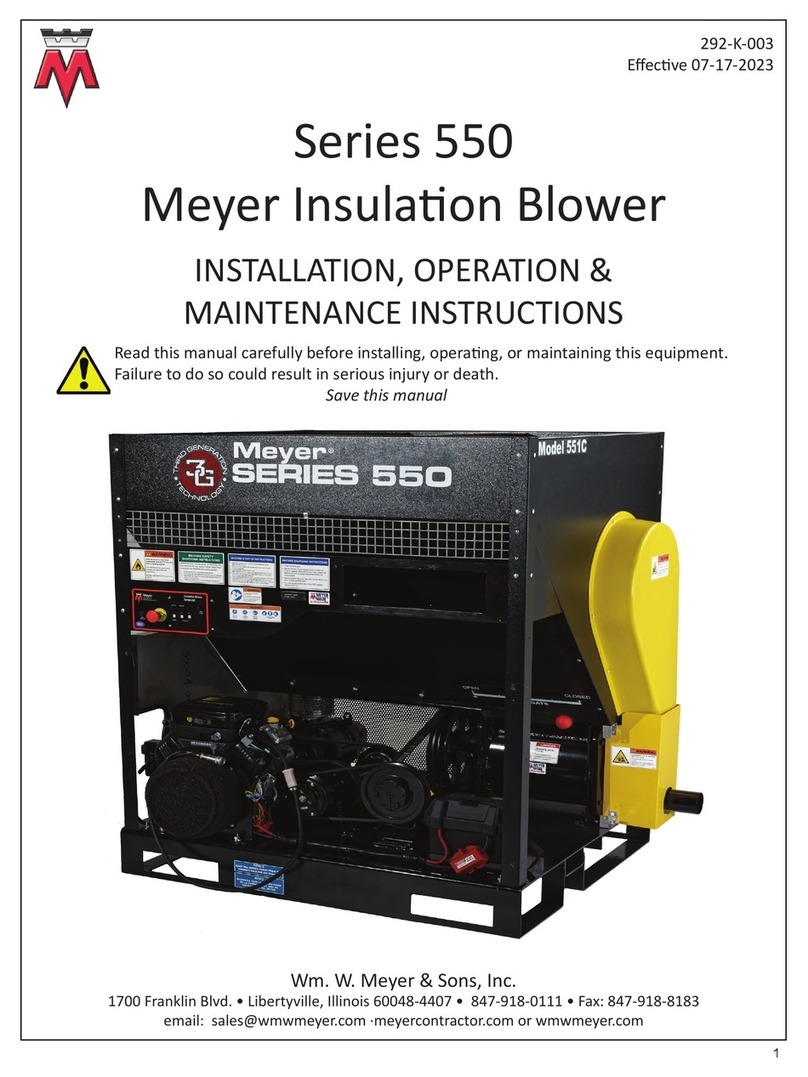
Meyer
Meyer 550 Series Installation, operation & maintenance instructions
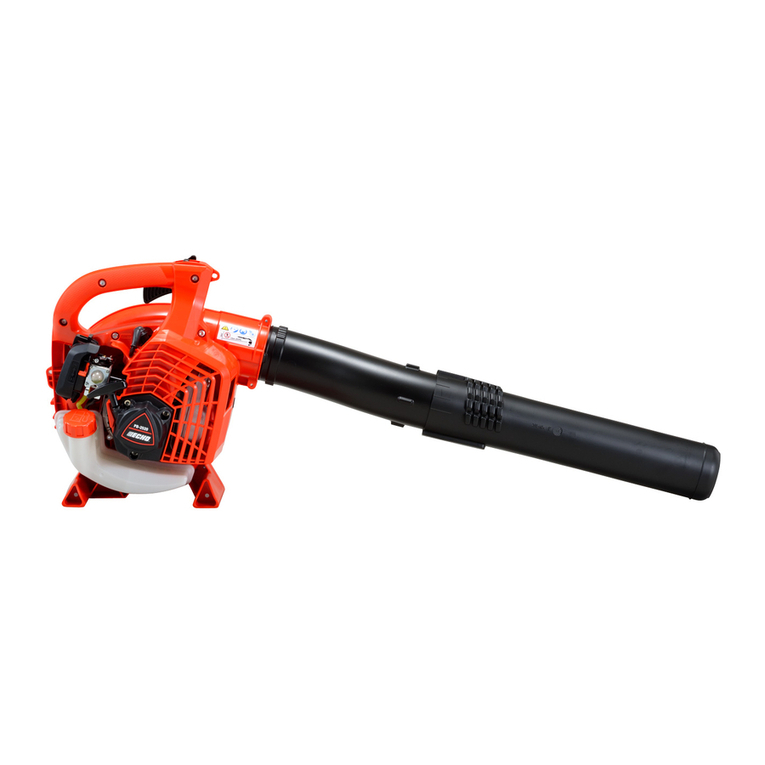
Yamabiko
Yamabiko ECHO PB-2520 Service manual
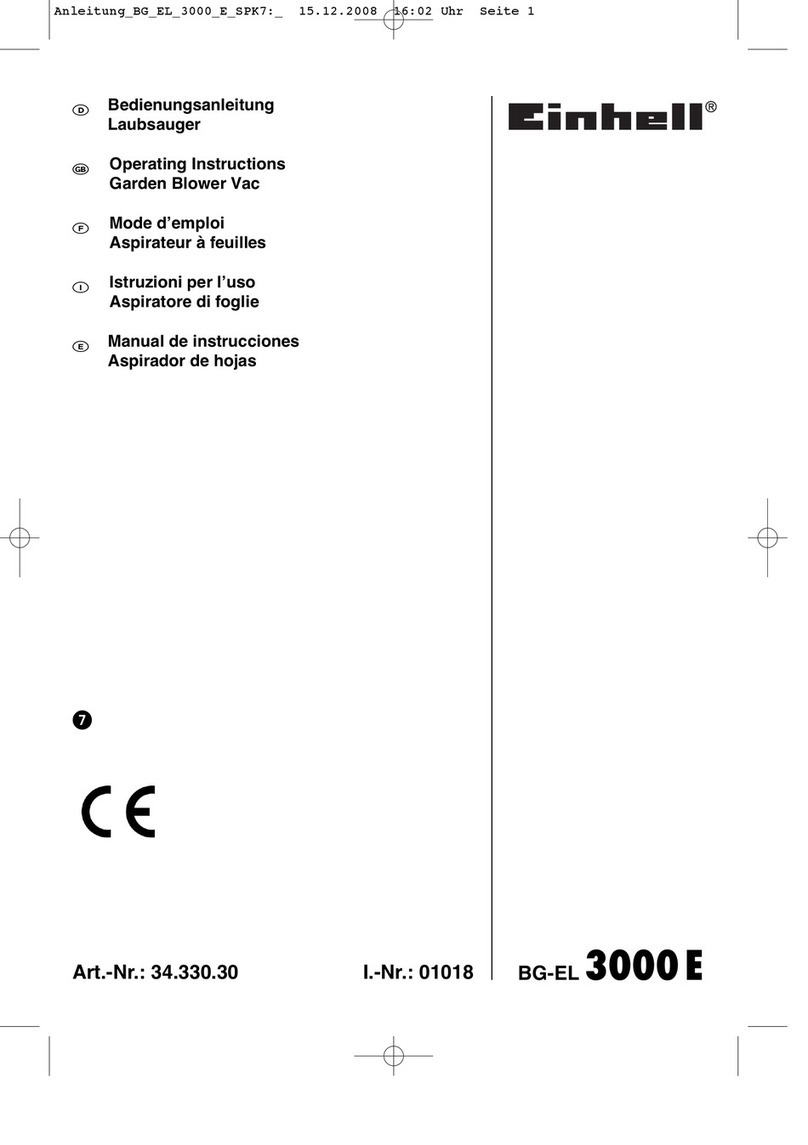
EINHELL
EINHELL BG-EL 3000 E operating instructions
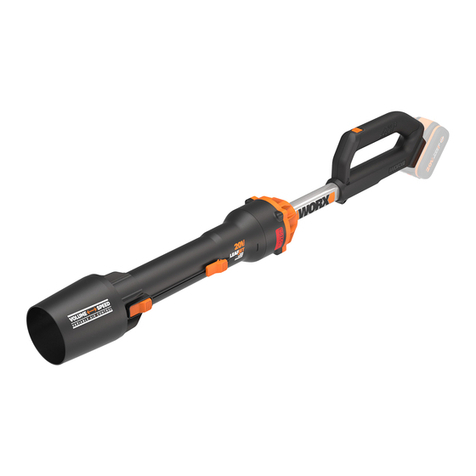
Worx
Worx LeafJet WG543E Original instructions
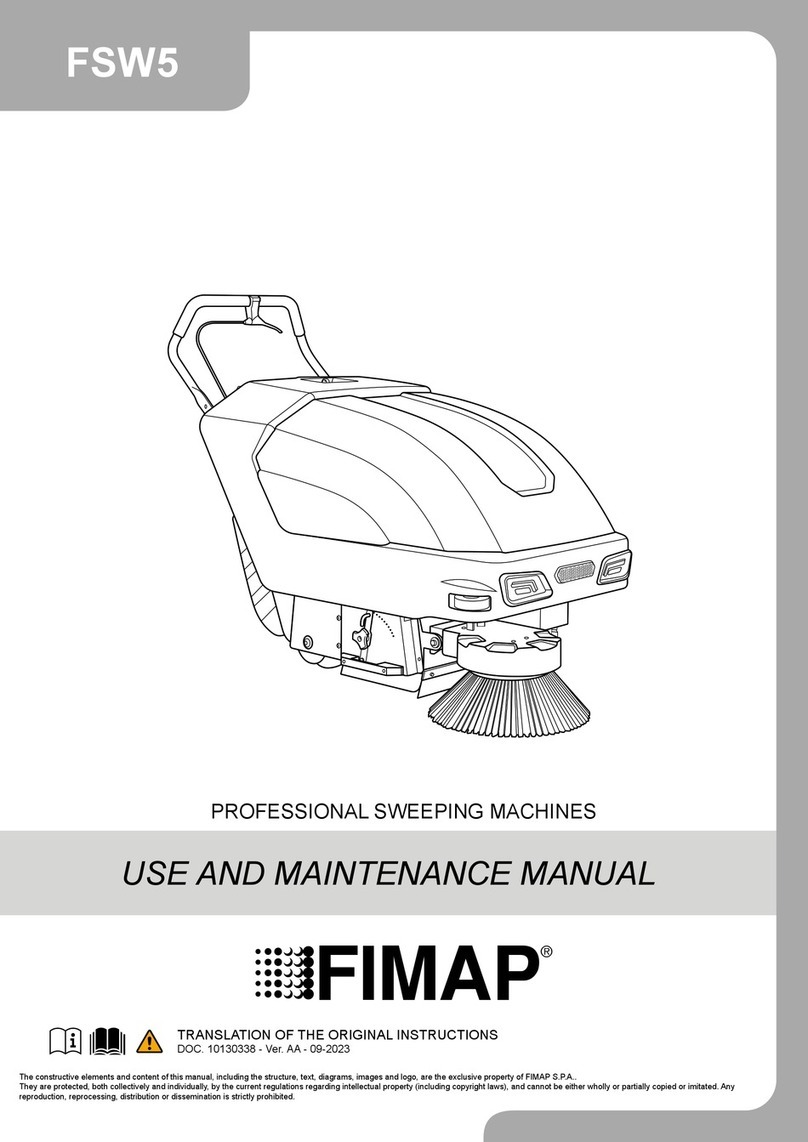
Fimap
Fimap FSW5 Use and maintenance manual



